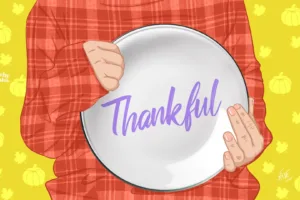7 Tips to Teach Your Kids to Be Grateful
When was the last time your kids stopped to think about what they’re grateful for? In a world where social distancing has been the norm for the past two years and COVID has fostered another even larger pandemic of fear and anxiety, it is more important than ever to teach your children how to practise gratitude on a regular basis.
Gratitude is more than just saying “thank you” and offers so many benefits. It can help foster positive attitudes as well as give the ability to transform how we view our world providing a solid foundation for children to flourish. According to a study published in the Journal of School Psychology, grateful kids (ages 11 to 13) tend to be happier, more optimistic, and have better social support. They also report more satisfaction with their schools, families, communities, friends, and themselves. Still, gratitude is one of the trickiest concepts to teach.
Here are some fun ways to get them started.
-
Talk about positive thoughts
Have conversations with your child daily about what brings them joy, regardless of how big or small. This will help them appreciate what they have and it will increase their optimism. Hold each other accountable for negative thoughts and words. This can be a fun game, helping each other to rephrase a negative word choice to something more positive. When your child is sad, remind them that this feeling will pass but it’s actually necessary in order to feel joy.
-
Create a gratitude jar
At the end of each day or week, have your child write down something or someone they are grateful for. Put it in a special jar, and at the end of the year, have a special event where you read each note with them and celebrate their ongoing feelings of gratitude. If your child is having a particularly hard day, open the jar and read a few of the entries to them to remind them of what they have to be grateful for.
-
Write in a gratitude journal
Purchase a special book where your children can record 3-5 thoughts on what made them feel grateful that day. If you make this a daily practice along with your child it becomes a fantastic keepsake that you can go back to later to remember a life well-lived from a gratitude standpoint. You can also create an ongoing list of things you’re grateful for — a nice dinner, a special event, even the change of seasons. Challenge each other to think of something new each day to add to the list.
-
Write thank-you notes
When your children receive gifts on their birthday or for a holiday, encourage them to write a thank-you note to express their gratitude and kindness to others. You can explain they will be individuals who show compassion toward others that will help in their relationships which are the key to happiness. Write gratitude notes to your postal carrier, the person who bags your groceries, or the individual who takes away your garbage. If possible, hand-deliver these notes so your child, and you, can see the positive effect it has on the recipients’ day.
-
Smile
Encourage your child to smile at others and see what happens next. Explain that smiling is a way of showing our gratitude for each other and it also can lift up the spirits of another. Go on a walk where there are other people and count how many smiles you get in return. Explain to your child that even when the person doesn’t return the expression, their brains are releasing the same feel-good neurochemicals as if they were smiling as well, just by seeing you smile.
-
Take a walk
Get out in nature and have your child note the sights, sounds, and smells that bring them joy. Notice the animals, feathers on the ground, interesting rocks, or the shape of the leaves on the trees. Stop to listen to the rustling of the wind or the breath of the dog you’re walking. Go barefoot! Direct contact with the electrical charges coming from the earth’s surface has many positive effects on our body and mood.
-
Gratitude collage
Have your child make a poster to hang in their room with photographs, pictures from magazines, or their own drawings of the people, places, and things they appreciate. Collect items from your travels together that they can incorporate into their artwork. Do the same and then share your collage on social media to inspire and motivate others. Share how it made you feel to create it and the lasting effect of having this as a reminder of the many things you have to be grateful for.
By practising gratitude every day, children can shift their minds from negative to positive thinking. We have thousands of thoughts that go through our heads each day but we can only focus on one thought at a time. Gratitude can help shift the focus of our lens away from lower energy thoughts like anger, frustration and resentment. The best thing is that there is always something to be grateful for.
Like this post? Support Us or Sign up to our newsletter to get more articles like this delivered straight to your inbox!






